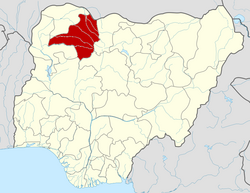Zamfara State
States Jan 04, 2025

Table of Contents
History of Zamfara State, Nigeria
Zamfara State, located in the northwestern region of Nigeria, is rich in history, culture, and tradition. It holds a significant place in Nigeria’s historical evolution and has been a hub of Islamic scholarship and commerce for centuries. Officially created on October 1, 1996, Zamfara is among the youngest states in Nigeria. However, its roots stretch back to the Sokoto Caliphate and beyond, making it an essential part of Nigeria’s historical landscape.
Early History of Zamfara
The history of Zamfara can be traced back to the early Hausa city-states that emerged in the region centuries ago. Zamfara was one of the original Hausa Kingdoms, alongside Kano, Katsina, Zaria, and others. These kingdoms thrived on agriculture, trade, and craftsmanship, establishing themselves as significant centers of commerce and culture in West Africa.
During the pre-colonial era, Zamfara was home to a powerful and influential dynasty. The rulers were known for their military strength and political influence in the region. Zamfara’s strategic location allowed it to serve as a vital trade route for merchants traveling across the Sahel and the Sahara Desert.
The Sokoto Caliphate and Zamfara
In the early 19th century, Zamfara became part of the Sokoto Caliphate, a powerful Islamic empire founded by Usman dan Fodio during the Fulani Jihad. This movement was instrumental in spreading Islam across the region, and Zamfara played a vital role in this transformation. The integration into the caliphate brought significant changes to Zamfara’s political and social structures, as Islamic laws and governance were established.
Under the Sokoto Caliphate, Zamfara continued to flourish as an agricultural and trade hub. The introduction of Islamic education further enriched the region’s cultural heritage, and Zamfara became known for its Quranic schools and scholars.
Colonial and Post-Independence Era
During the British colonial administration, Zamfara was incorporated into the Northern Region of Nigeria. The colonial government introduced new systems of governance that disrupted traditional structures but also paved the way for modern education and infrastructure development. Despite these changes, Zamfara retained its cultural identity and continued to thrive as an agrarian society.
After Nigeria gained independence in 1960, Zamfara became part of the newly created North-Western State, which was later divided into Sokoto and Niger States. In 1996, Zamfara State was carved out of Sokoto State as part of the federal government’s efforts to bring governance closer to the people and foster development in the region.
Modern-Day Zamfara
Today, Zamfara State is known for its rich cultural heritage, agricultural potential, and historical significance. The state capital, Gusau, serves as a political and economic hub. Zamfara is also known for its traditional festivals, crafts, and vibrant markets, which attract visitors and traders from across Nigeria and beyond.
However, in recent years, Zamfara has faced challenges, including insecurity and economic difficulties. Efforts are being made at both the state and federal levels to address these issues and unlock Zamfara’s full potential as an agricultural powerhouse and cultural hub.
Conclusion
Zamfara State’s history is a testament to its resilience and importance in Nigeria’s historical and cultural tapestry. From its origins as a Hausa Kingdom to its integration into the Sokoto Caliphate and eventual emergence as a modern Nigerian state, Zamfara continues to play a vital role in the country’s development. Its rich history and cultural heritage make it a fascinating subject for historians, researchers, and visitors alike.
